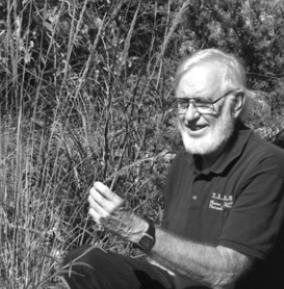Soil: too valuable to be called dirt
I have heard it said that dirt is what you get under your fingernails, but soil is what your trees and grass and flowers grow in. It is probably true that when people look to buy a piece of property, they may look at what trees or other vegetation is growing on the property, the view, whether or not there is surface water, etc., but they seldom even think about what is probably the most valuable thing on the property; the soil. Without soil you can’t grow plants, without plants you can’t raise animals, and it would be a barren landscape indeed.
So what exactly is this valuable commodity we think so little about? Soil is actually a mixture of a number of components; the mineral component, which can be classified as sand, silt or clay depending on particle size, an organic component made up of mainly dead plant debris, a collection of living organisms from bacteria and fungi to earthworms and beetles, water and air. It is the relative amounts and the chemical and physical properties of these components that determine the characteristics of soils throughout different parts of the country.
In terms of mineral soil constituents, sand has an average particle size of about one millimeter, silt about 0.025 millimeter and clay about 0.0001 millimeter. (Note: these greatly oversimplified sizes are generalizations just to give you an idea of how different they are). Clay particles are not only very small, but they have a very high surface area per unit weight which allows them to adsorb and hold tightly much more water than sand particles. Furthermore, when they adsorb water they swell, and when they dry out they shrink, which is what causes the cracking you see when mud puddles dry up.
The relative amounts of sand, silt and clay are what determine the characterization as sandy loam, sandy clay, silty clay, etc. (The term loam usually refers to the desirable properties of loose, friable soil that both adsorbs moisture easily and drains well and generally contains a significant amount of sand.)
The organic component of soil mostly starts off as either dead leaves on the surface or dead or dying roots. This dead organic matter becomes food for all of the living organisms in the soil, either being directly eaten by the larger organisms, or by the decay products being consumed by microorganisms. This process helps recycle nutrients and make various nutrients available to the roots of the higher plants.
Without soil organisms digesting the protein in leaf litter and converting it into ammonium or nitrate ions, the plant roots would not be able to take up the nitrogen. Nitrogen is the most commonly limiting nutrient in Hill Country soils, so without the soil organisms productivity of Hill Country soils would be much lower.
The fact that the soil contains water and that it is an essential ingredient in plant growth is probably a surprise to no one. Water is necessary not only to keep the living plant cells alive and functioning and transporting material from the roots to the leaves and vice versa, but it is actually a reactant in the chemical reaction of photosynthesis to make carbohydrates from carbon dioxide.
That air is also a necessary ingredient in the soil may be surprising to some people, but the roots need air too. When nor-mally porous soil is compacted by vehicle or cattle traffic when the soil is wet, or when an area is flooded for a long period of time, the cause of the subsequent plant death is usually lack of air to the roots. Compaction also makes it difficult for the roots to grow.
You as a landowner can’t do much about the mineral composition of your soil, but you can do a lot to create and maintain the healthiest soil possible. Healthy soils need to be able to adsorb rainwater easily, and the best way to achieve that is to grow native bunch grasses which produce porous “sponges” beneath the grass plants. Good grass stands also produce large amounts of leaf litter which in turn feeds high populations of soil organisms making the soil productive. A good stand of grasses and other vegetation also protects soil from raindrops dislodging soil and creating erosion and it shades the soil, reducing water evaporation and maintaining good soil organism growing conditions.
Until next time…

